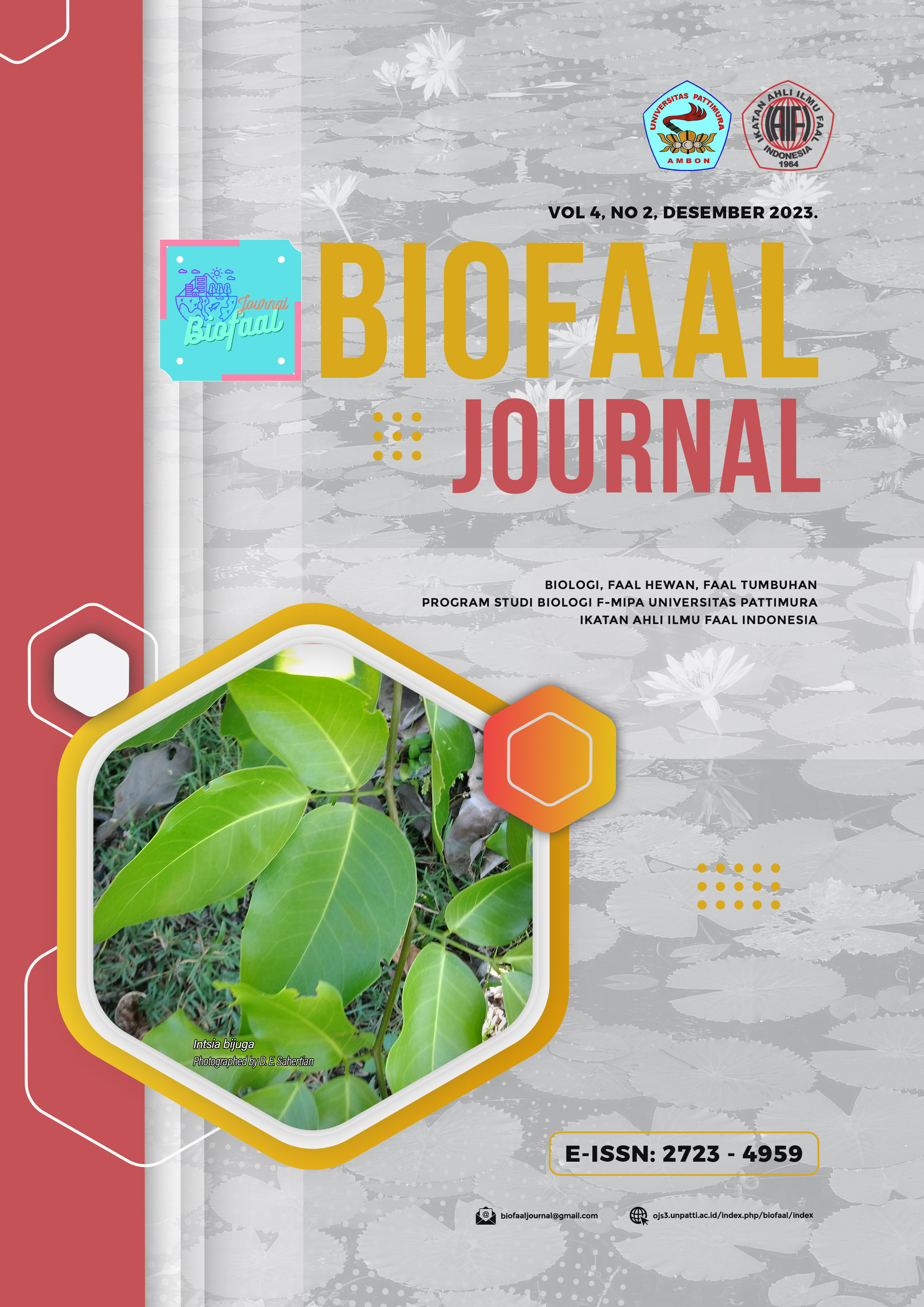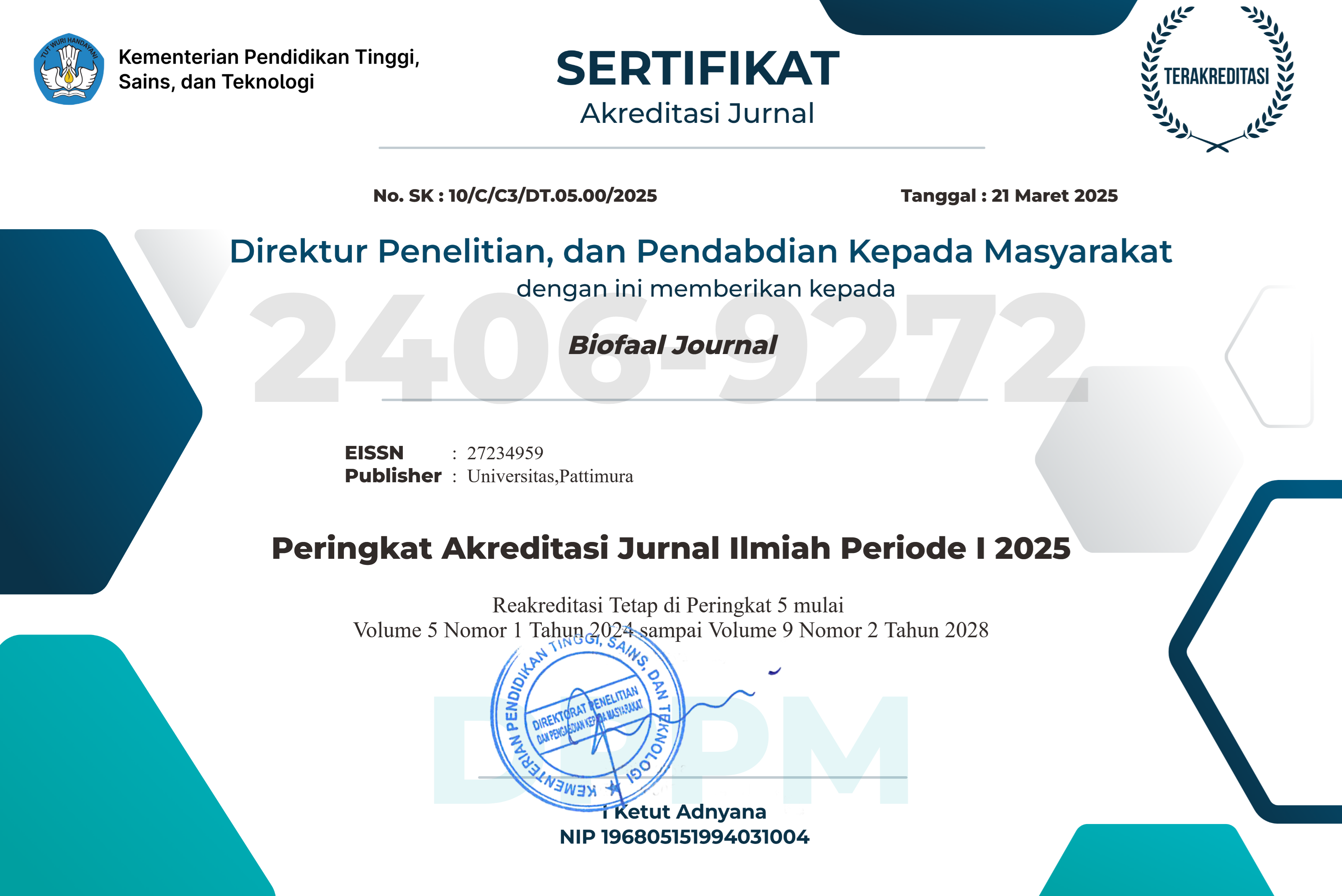ANALISIS FILOGENETIK GEN gyrA DAN gyrB DARI GENUS MESORHIZOBIUM, RHIZOBIUM DAN ENSIFER
Abstract
Nucleotide sequence of gyrA and gyrB genes encoding subunit A and B of gyrase enzyme from genus of Rhizobium, Ensifer and Mesorhizobium were analyzed to determine evolutionary relationship among them. Maximum Likelihood and Kimura 2 parameter methods were used to construct phylogenetic tree and measure genetic distance. Phylogenetic tree based on nucleotide sequence of gyrA gene was compared to phylogenetic tree based on nucleotide sequence of gyrB gene. Comparison of identity percentage among nucleotide sequence of gyrA gene from genus Rhizobium, Ensifer and Mesorhizobium show similarity, where each of them have narrow range of identity percentage, however nucleotide sequence of gyrB gene from genus Rhizobium and Ensifer show wider identity percentage range than genus Mesorhizobium. Several member of genus Rhizobium and Ensifer have double copy of gyrB gene with identity percentage less than 50 percent between them. Topology of phylogenetic tree based on nucleotide sequence of gyrA gene have similar topology to topology of phylogenetic tree based on nucleotide sequence of gyrB gene, except for additional branch formed by one of additional copy of gyrB sequences.
.
Downloads
Copyright (c) 2023 Edwin Thomas Apituley, Efraim Samson, Amos Killay

This work is licensed under a Creative Commons Attribution-NonCommercial-ShareAlike 4.0 International License.
1. Author retain copyright and grant the journal right of first publication with the work simultaneously licensed under a creative commons attribution license that allow others to share the work within an acknowledgement of the work’s authorship and initial publication of this journal.
2. Authors are able to enter into separate, additional contractual arrangementfor the non-exclusive distribution of the journal’s published version of the work (e.g. acknowledgement of its initial publication in this journal).
3. Authors are permitted and encouraged to post their work online(e.g. in institutional repositories or on their websites) prior to and during the submission process, as it can lead to productive exchanges, as well as earlier and greater citation of published works.








